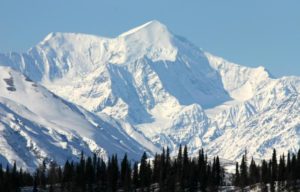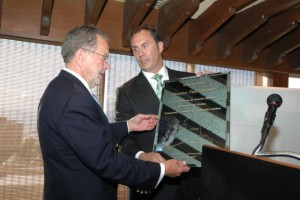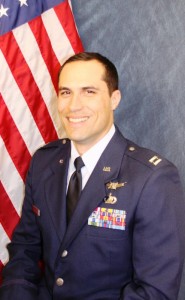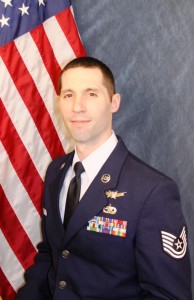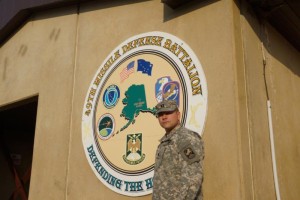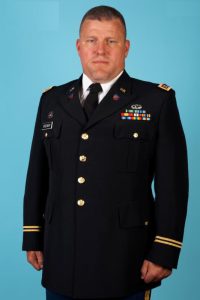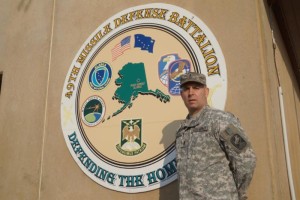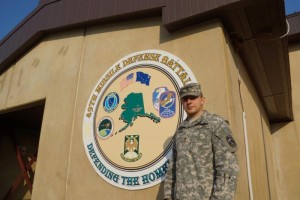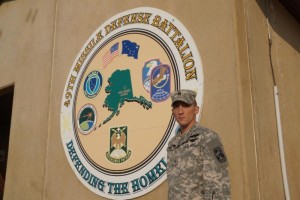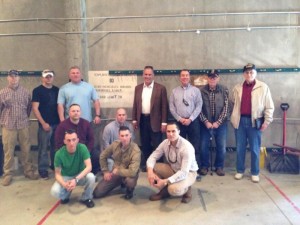Anchorage, Alaska / May 10, 2014The highest point in North America is Mt. McKinley, Alaska. The single most ideal place to protect and defend the entire North American Continent from air breathing and space breathing threats fired from countries in the Northern Hemisphere is from the high ground of Alaska. Polar routes circumventing the globe have always been the most optimal for aircraft and ballistic missiles heading towards North America. As such, the United States deployed its first air defense system in Alaska during the 1950s through the 1970s at sites around Anchorage and Fairbanks for the protection of the homeland of the United States against Russian Bombers. This air defense system was called Nike-Hercules. These sites had both radars and rail operated two-stage nuclear interceptors with a fire control system manned by around 130 U.S. Army soldiers. This Air Defense System coordinated with the early warning radars at Clear Air Force Base in Alaska and had a range of 100 miles. There were a 145 total sites throughout the United States during this time and the evolution of the Russian ICBM threat eventually lead to the deployment of the first national missile defense site in Grand Forks, North Dakota in 1975. The Grand Forks system was only active for less than a year before it was dismantled. In the mid-90s, the State of Alaska put forward the first state resolution for the active defense of Alaska and the United States from upcoming ballistic missile threats from North Korea and Iran. This ultimately led to the infamous Rumsfeld Commission which assessed that a ballistic missile threat to the United States from rogue states could come as early as 2005. Ted Stevens, the Senior Senator of Alaska and President Pro Tempore of the United States Senate led the effort for a Ground based missile defense system to be developed. The system would be non-nuclear, and use kinetic energy to intercept and destroy incoming missile threats. Most importantly, it was to be shifted from the Grand Forks North Dakota location to Fort Greely, Alaska so it could protect all 50 states including Hawaii and parts of Alaska, which the Grand Forks site could not provide. In 2002, with the support of Senator Stevens and many prominent members of the U.S. Senate, The United States withdrew from the Anti-Ballistic Missile Treaty with the defunct Soviet Union and moved forward to deploy a missile defense system in Alaska as well as the U.S. Navy Aegis Ballistic Missile Defense systems and the development of the U.S. Army’s THAAD system. In 2004, the first ground based missile defense interceptor was deployed in Missile Field One at Fort Greely, Alaska. In 2006 the GMD system in Fort Greely became fully operational. Today, Fort Greely has three missile fields that hold up to 30 GBIs and is operational 24/7 and manned by close to 150 Alaska Army National Guard soldiers. Next year, the Ballistic Missile Defense Sensor upgrades to Clear Air Force Base, manned by the Alaskan Air Force National Guard, are due to be completed and linked directly to Fort Greely. In 2017, as ordered by President Obama, there will be an expansion in Alaska and the GMD system to have a total of 44 GBIs in place to protect the United States of America. This past Saturday night in Anchorage, MDAA honored and recognized Alaska’s best missile defenders of the Alaskan National Guard from the best Air Force two-person crew from Clear Air Force Base and the best Army five-person firing crew from Fort Greely. MDAA also introduced the inaugural Senator Ted Stevens Memorial Award for the single best missile defender in Alaska. The winners of these awards are as follows: *** Alaska Air Force National Guard out of Clear Air Force Base for the best early warning crew: Captain Erik J. Haugen Flight Chief, Operational Support Flight, 213thSWS Technical Sergeant Brian C. Rowbotham Crew Chief, Missile Warning Operations Center, 213th SWS *** Alaska Army National Guard out of Fort Greely for the best firing crew:
Bravo Battery 49th Missile Defense Battalion Captain Ryan Richard Senior Tactical Director Captain Jason Brewer Tactical Battle Analyst Chief Warrant Officer 3 Jacob Moore Headquarters and Headquarters Battery Staff Sergeant Derrick Holmes Engagement Control Team Leader Sergeant John C. Sorrells Engagement Control Shift Leader *** The Ted Stevens Memorial Award for the best Missile Defender: Captain Eric E. Kraus Senior Tactical Director, 49th Missile Defense Battalion Alaska Army National Guard *** Senator Ted Stevens’s living legacy and leadership on missile defense in Alaska could not go forward without the leadership of the champions of these men and women that serve in this mission at both Clear Air Force Base and Fort Greely that were recognized Saturday night in Anchorage. That excellence on any team makes champions and very few can set the standards of excellence, led by example through action not words. These individuals that were honored that can overcome all odds in all situations with their teams to fully enable these highly sophisticated technical systems. Present at the event to recognize these Airmen and Soldiers was the wife of Senator Ted Stevens Mrs. Catherine Stevens, U.S. Congressman Don Young of Alaska, United States Senator Lisa Murkowski, Lt Governor of Alaska Mead Treadwell, Alaska Adjunct General Major General Thomas Katkus, Alaska Air Force National Guard Brigadier General Tim O’Brian and Alaska Army National Guard Brigadier General Mike Bridges. MDAA had also the honor and opportunity to bring together the old U.S. Army Veterans of the Nike Hercules Missile Defense sites stationed in Alaska with the Alaska Missile Defender of the Year winners of this generation and tour one of the Nike Hercules sites in Anchorage, Alaska together: 2014 Alaska Missile Defenders of the Year with veterans of the Anchorage Nike-Hercules Site. May 11, 2014. This recognition comes at the right time for our Alaskan National Guard who man and operate these systems here in Alaska to help elevate their morale and resolve to be better than they have ever been in the defense of our nation. Our missile defense and our missile defenders are on top of the world providing assurance for the protection and defense of our nation and our way of life. Let’s make sure they stay that way. |

